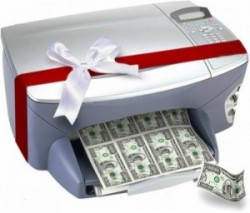 In a small business it is easy to overlook the amount of money wasted when it comes to our printers and printing supplies. We take our printers, paper, and ink for granted and end up loosing track of the expenses involved. The good this is that it is extremely easy to save money in this area.
In a small business it is easy to overlook the amount of money wasted when it comes to our printers and printing supplies. We take our printers, paper, and ink for granted and end up loosing track of the expenses involved. The good this is that it is extremely easy to save money in this area.
The beginning of the year is always when we are focused on our budgets and sticking to them, so this is a great time to do a quick audit of our office printing habits.
First, take a look at all of the printers in your office. Seems obvious, but at times printers can sneak up on you and make their way onto someone’s desk that really doesn’t need one.
I recommend a simple excel sheet of the printers in the office with columns with such information as:
Printer brand, model, ink cartridge or toner replacement numbers, ink cartridge or toner replacement cost, location of printer (is it in the hallway or sitting on Tom’s desk?), is the printer hooked to the network (if it is on the network it makes it easy to share). Include any other data that may be helpful in your specific office setting.
Once you get this data compiled, first evaluate if all these printers are actually needed? Do Tom and Linda both need a printer on their desk, or could they share a printer? How often do they use a printer each day? Or consider if a different printer is a better option for them. For example, do they need to print color? Mostly like not, then switch them to a monochrome laser printer that will save significant money in the long run. (read an article about other money saving tips on ink and toner cartridges here).
When you are taking your officer printer audit, take into consideration that it is easier and more efficent to have as many printers as possible using the same ink and toner. Spending some money now on two or three basic printers that are the same make and model, could be a savings over the year. For example, it is possible to get a basic laser printer for $60 shipped. It is a good option for offices where only two or three people need to share a printer.
It really is important to centralize your printing supplies. Having them all in one place is helpful and smart. It will keep a handle on over purchasing supplies as well as a way to track where and who are using the supplies. With this sort of information you can adjust who needs to use which printer or see maybe where a shared printer would be better suited.
Finally, ask everyone in the office to help out. Ask them to print in draft mode when appropriate or to use paper on both sides. Explain why you have the printers in the office located where they are. Explain that centralizing the printing supplies is not to punish anyone, but to save money overall and to make it easier for them to have the tools and supplies they need for their jobs.
